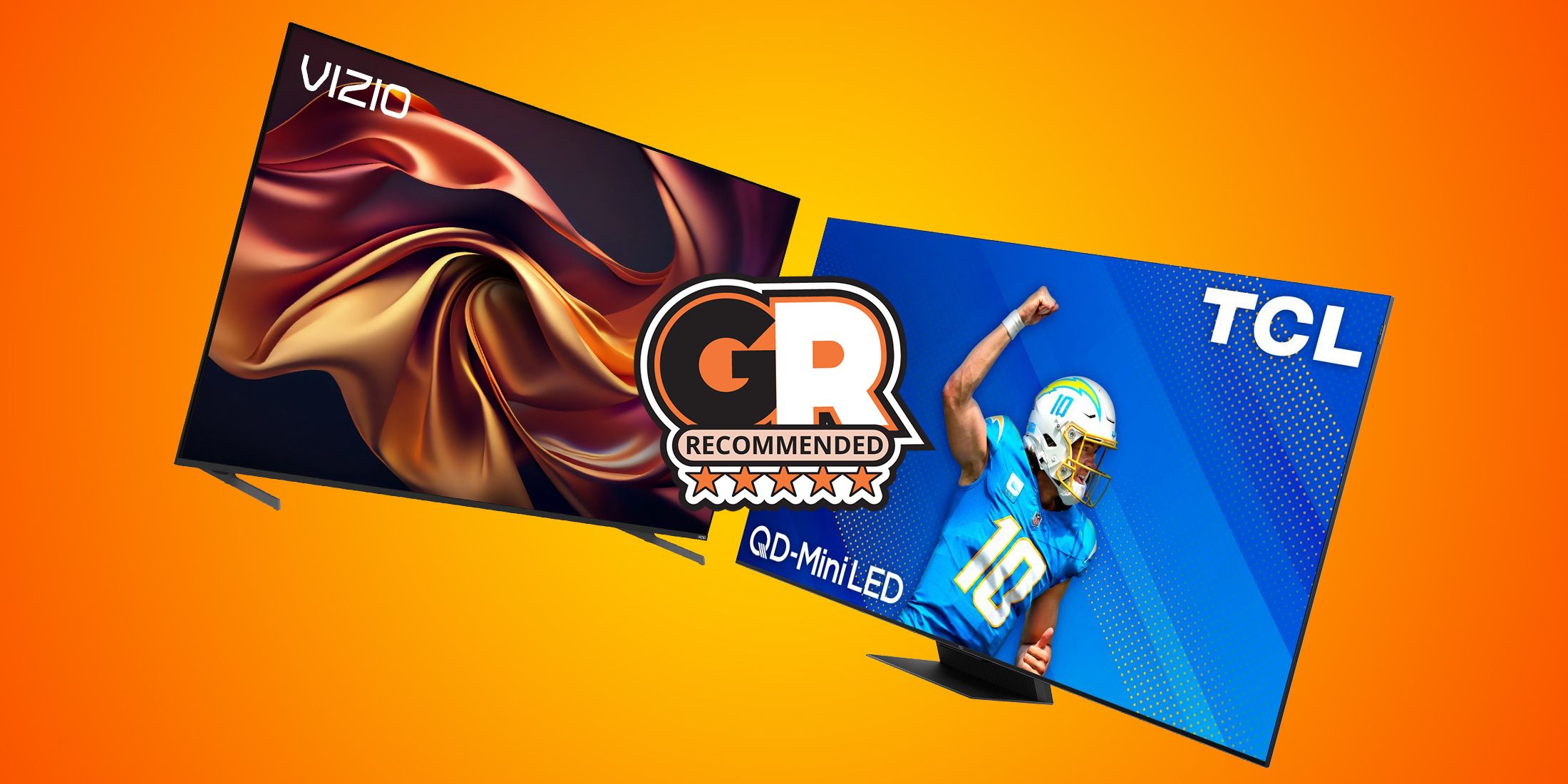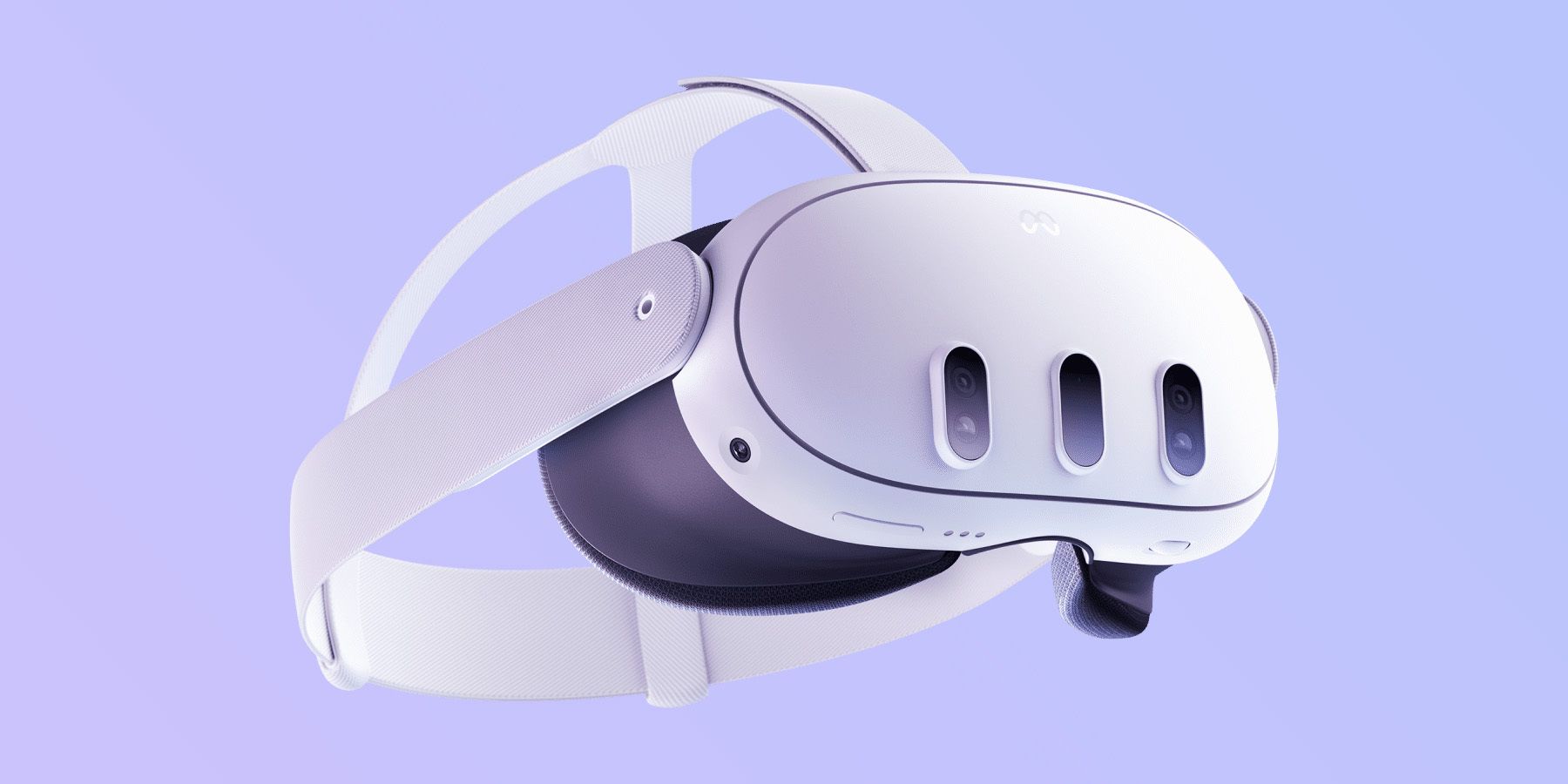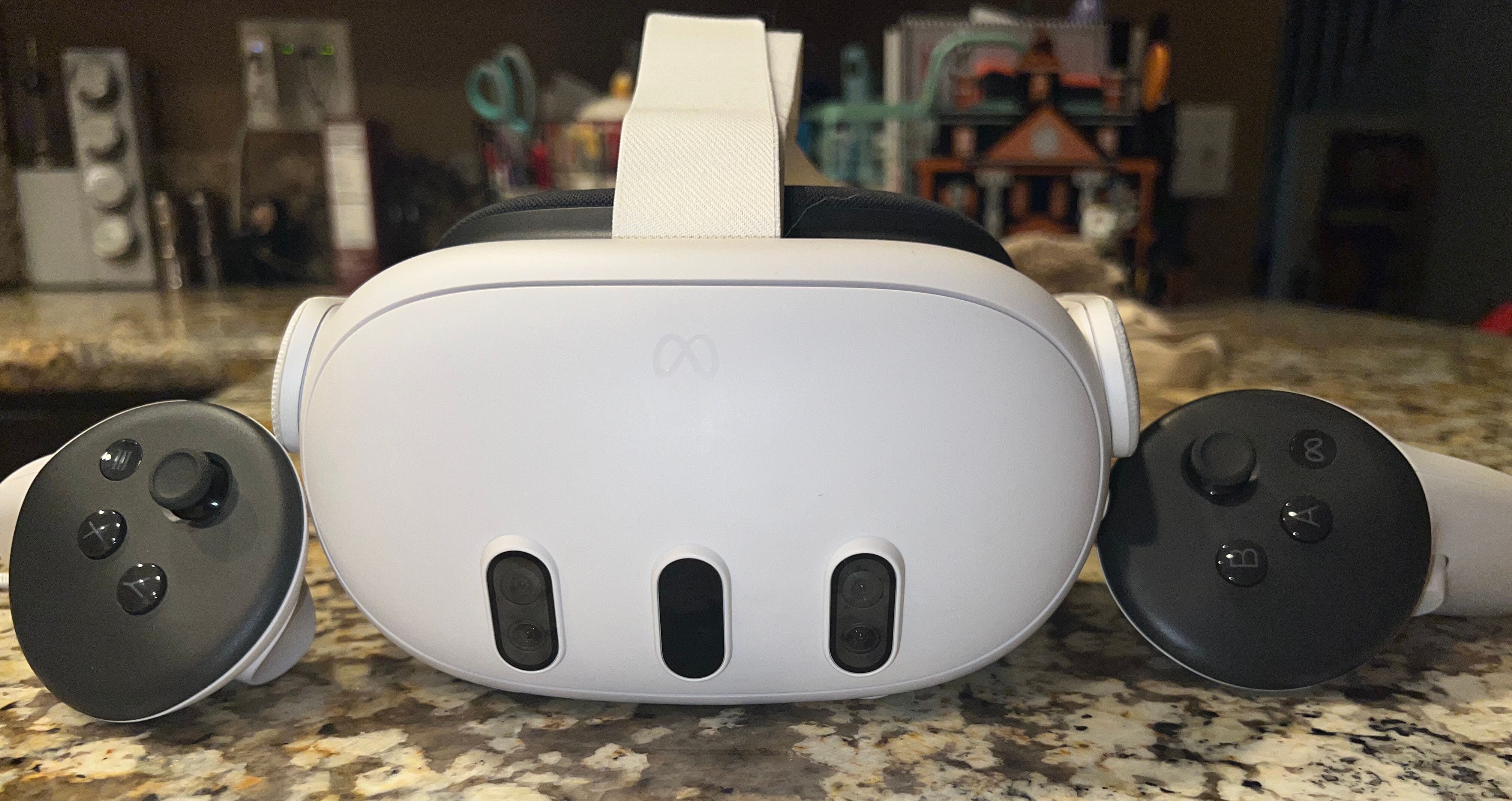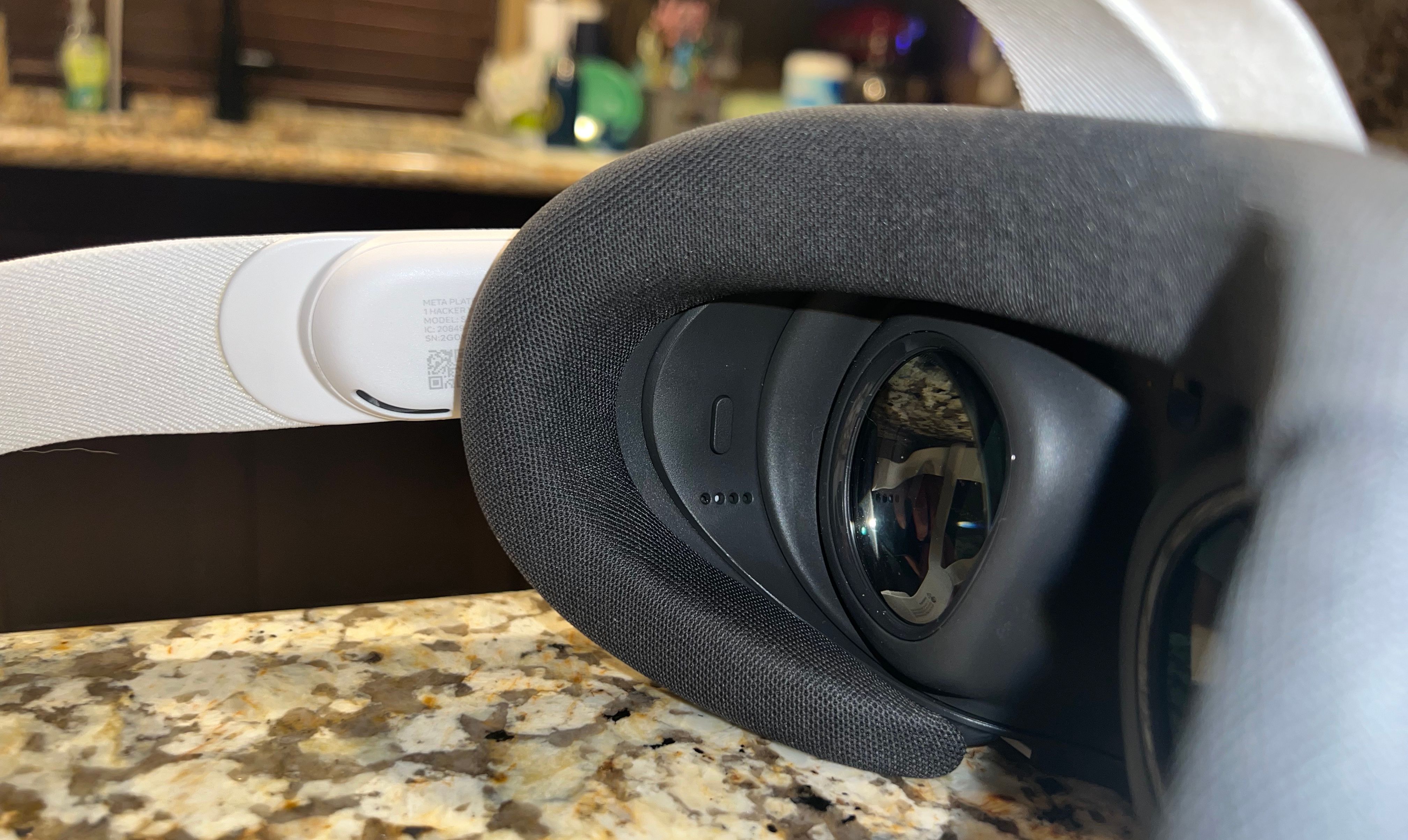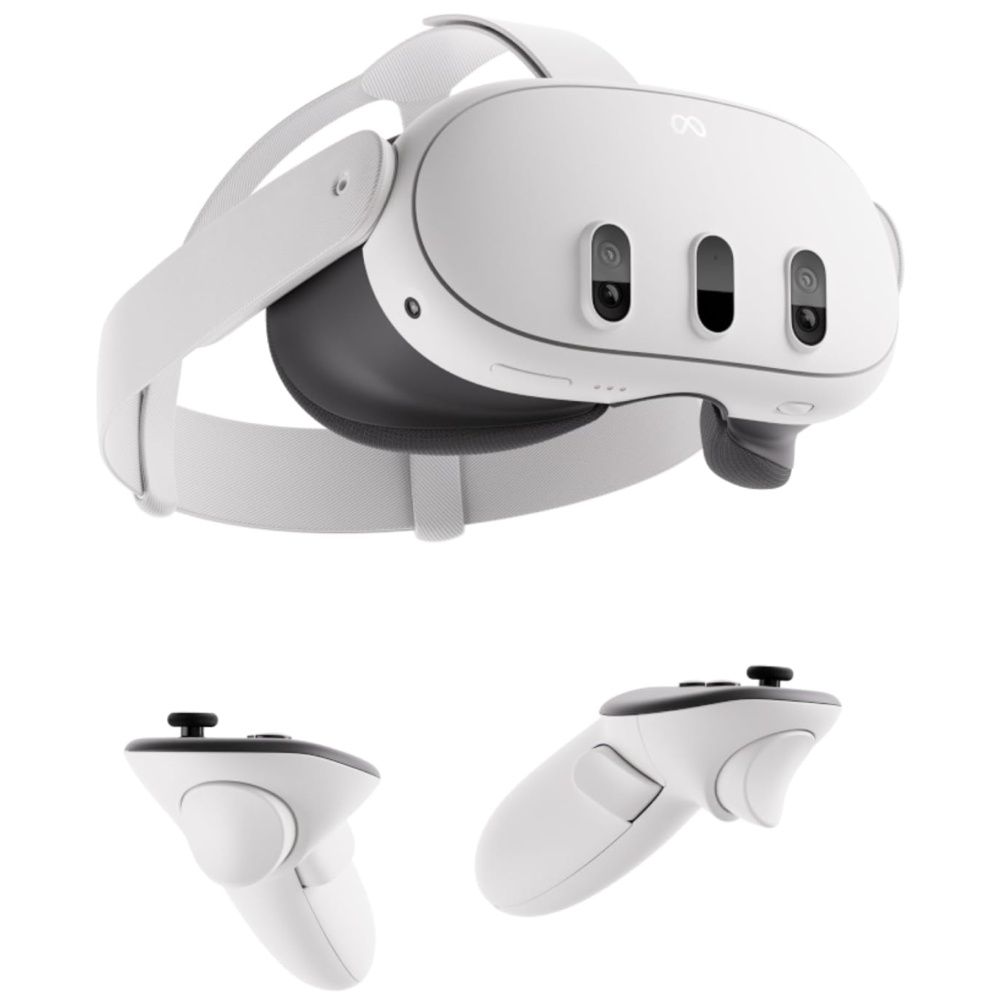Although Virtual Reality experiences have typically come in waves, many of the companies at the forefront of the industry have continued to innovate. Meta is arguably leading the charge as far as VR headsets are concerned and with the release of the Meta Quest 3, the company has once again set a new standard for what VR gaming should deliver. It’s a lighter, slimmer, and more sophisticated headset that any VR enthusiast would be happy owning, and if the software keeps up, the Quest 3 should be able to deliver more and more impressive experiences.
Although the Quest 3 looks fairly similar to the Quest 2, its design is filled with smart changes. First and foremost is the camera array that tracks movement in the real world and translates that to virtual space. Meta has made the Quest 3’s tracking more precise and accurate, ensuring that those inconsistencies of movement that tend to crop up in VR gaming are less frequent. Picking up the controllers and jumping into a game is a simple process and the headset does well to track each's movement, while also keeping tabs on the player’s head and body movements within a VR space.
Most impressive is how much precision those tracking cameras allow. Within the Quest 3 setup menus, users can set their play space boundaries, but right out of the box, the headset can understand what playable area is available and provide those all-important signifiers when someone steps outside that area.
Hand in hand with that tracking are the RGB cameras that provide passthrough imagery to the Quest 3 headset. At first, being able to see one’s real surroundings in color might not seem like a huge benefit, and time will tell how well developers use that feature, but it becomes a huge boon the longer one uses the headset. Just by tapping the side of the headset, users can toggle the passthrough view and interact with their surroundings without taking off the headset. Being able to grab a glass of water, check a text message, or just check to confirm you really are alone are really useful capabilities of the headset.
But the promise of mixed reality experiences where virtual objects exist in real space is where Quest 3 can really shine. Currently, there aren’t enough experiences available to say how much of a game-changer AR or MR are going to be, but it is cool having a virtual screen floating there in front of you. And with Microsoft’s promise of xCloud support, Xbox cloud gaming on a large virtual screen might be a secret weapon for the headset.
Another way the passthrough comes into play is to notify users that they have overstepped their boundary. Normally, VR headsets have somewhat intrusive warnings to call attention to users that they are about to bump into a wall or object (and rightly so), but the Quest 3 does this by blending the virtual screen with the real world. In essence, it feels like users are poking their hands through the VR space and the headset software is letting them know they need to reposition themselves.
Every VR headset has its own design and its own way of comfortably fitting on a user’s head. The Meta Quest 3 uses a few different tightening points to ensure a snug fit that feels tight without being uncomfortable. It’s a similar, goggle design that VR headsets have been known for but the single strap that goes over the top of the head splits into two points that can be pulled apart or pushed together to loosen or tighten the fit. Then the front of that strap uses Velcro to secure things further. At the end of the day, this is still a headset on the front of your face, but the design is thoughtful enough to keep the Quest 3 from putting strain on users’ necks or feeling too tight around the head.
A huge plus in the Quest 3 design is that the headset itself is not as bulky as past iterations. It doesn’t protrude as far and put a lot of unnecessary strain on the straps and the user’s head. This is thanks to the pancake lens design of the Quest 3 that, in addition to being higher resolution than the Quest 2 (two LCDs with a resolution of 2064 x 2208 pixels per eye), has a wider sweet spot. VR headsets live and die by how well they can get users into that sweet spot where everything looks clear even as users move their eyes, heads, and bodies, and the Quest 3 is at the top of the class in that regard. Admittedly, glasses users will still find the PlayStation VR 2 is the most accommodating with its sliding apparatus but the Quest 3 does have adjusters for increasing the space between the eye and the screen without an additional accessory.
In terms of a consumer VR headset, the Quest 3 has the most features to help hit that sweet spot and the widest range capable with its lenses. There is even a slide wheel for eye distance to help account for different users whose eyes are closer together or further apart. Honestly, there isn’t much more that Meta can offer outside a different design that would ensure a broad combination of fit, usability, and comfort.
While the headset has a lot of big changes the Quest 3 controllers are a bit more familiar. Gone are the “protection rings” that surround the controllers, but everything else about the design from the button layout to the use of AA batteries is practically the same. Combined with the headset, the tracking of the controllers and the recognition of finger pressure is much better, though. And the addition of haptics adds feedback that deepens immersion. The design of the Quest 2 Touch controllers was solid to begin with, but Meta has made sure that the Quest 3 controllers are competitive in the VR space.
By tapping the controllers together, users can switch to hand tracking with the Quest 3 (where supported) but that was hit or miss in our testing. Being able to virtually press a button or type on a keyboard is novel but hands seem to be harder to track than the controller. That being said, if developers can fine-tune that tracking and design experiences that let players accurately use their hands it could be another leap forward for VR gaming.
The Meta Quest 3 also has built-in speakers on the straps that rest above the left and right ear. There is a headphone jack for those who prefer it, but we found the speakers to be powerful enough to drown out basic room tone and pretty good at creating a spatial audio experience. Obviously, headphones are going to deliver a superior audio experience but that requires a few extra steps before jumping into a game. For our money, popping on the headset and relying on the speakers was more than satisfactory.
Because the Quest 3 doesn’t launch with any exclusive games, evaluating software is mostly about how well developers were able to update their experiences to utilize the new headset’s capabilities. Haptics are always a great addition and performance has been mostly exceptional in any game that was updated for Quest 3. Testing a rhythm game like Samba De Amigo or Beat Saber delivers the precision one would expect, but that wasn’t taken for granted. Red Matter 2, another game updated for Quest 3, was already great but it is made slightly more immersive with improved tracking and the haptic interactions. Once the Quest 3 starts getting in consumers’ hands, though, the expectation is more and more games will utilize the headset’s feature-set and resolution bump to become better versions of themselves. What we tested was all great but when it comes to evaluating the power capable of the Quest 3, those experiences are still on the way. And in terms of that power, we were only able to get about 2 hours of continuous playtime before the headset needed a charge.
The Meta Quest 3 VR headset is easily the most feature-rich option on the market for consumers right now. It has quite a few comfort considerations and adjustments that can be made to ensure the higher resolution screens come in crisp and clear. Tracking is better and the addition of passthrough, while very cool for getting one’s bearings, could be a real game changer depending on how developers use it. The controllers did not receive as significant of a design bump but the addition of haptics is a welcome one.
All that being said, VR is still a technology that requires an investment of both money and space, and a willingness to work with the headset to get to the ideal sweet spot. Meta makes it easier to get there through those adjustment features and by not requiring a PC, but some will simply not buy into this technology and they never will. Those who do see the value of VR as an additive element of gaming or entertainment in general will come away very happy with what Meta Quest 3 can do.
The Meta Quest 3 is available for $499.99 (128GB) or $649.99 (512GB). Game ZXC was provided a unit for this review.

